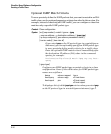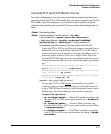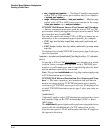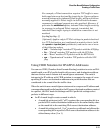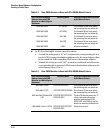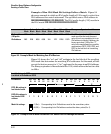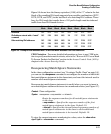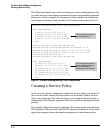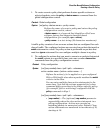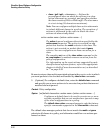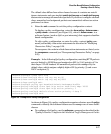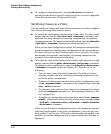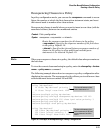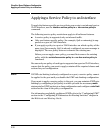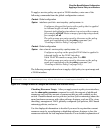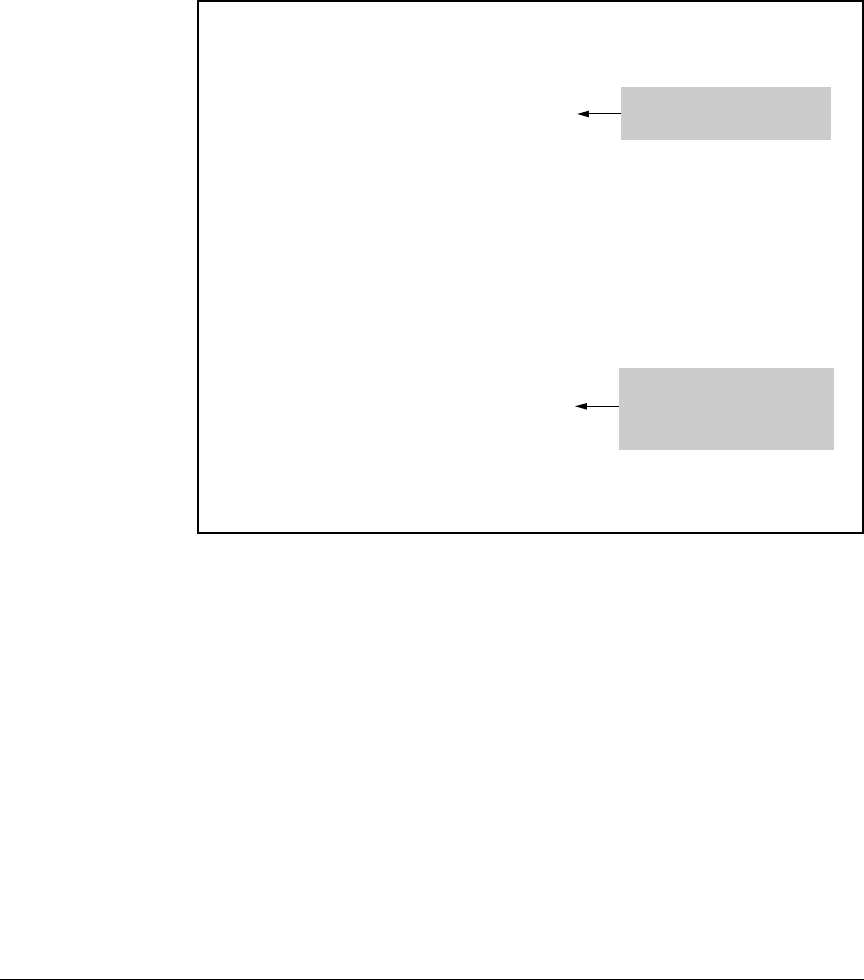
Classifier-Based Software Configuration
Creating a Service Policy
The following example shows how to resequence a class configuration so that
you can insert new match/ignore statements between sequentially numbered
statements. In this example, the resequenced class contains two additional
match/ignore statements and renumbers the criteria with an interval of 10.
ProCurve(config)# show class ipv4 My-devices
Class “My-devices"
1 match 10.10.10.25 0.0.0.0
2 ignore 10.10.10.1 0.0.0.255
3 ignore 10.20.10.1 0.0.0.255
4 match 0.0.0.0 255.255.255.255
exit
The interval between match/
ignore statements is 1.
. . .
ProCurve(config)# class ipv4 My-devices
ProCurve(config-class)# resequence My-devices 10 10
ProCurve(config-class)# 15 match 10.10.10.2 0.0.0.255
ProCurve(config-class)# 25 match 10.20.10.1 0.0.0.255
ProCurve(config-class)# exit
ProCurve(config)# show class My-devices
Class “My-devices"
10 match 10.10.10.25 0.0.0.0
15 match 10.10.10.2 0.0.0.255
20 ignore 10.10.10.1 0.0.0.255
25 ignore 10.20.10.1 0.0.0.255
30 ignore 10.20.10.2 0.0.0.255
40 match 0.0.0.0 255.255.255.255
exit
The interval between match/
ignore statements is 10 and
two new match/ignore
statements have been added.
Figure 9-7. Example of Resequencing a Class Configuration
Creating a Service Policy
In the classifier-based configuration model, the service policy you create for
one or more traffic classes is always relative to a software feature, such as
QoS or port mirroring. The software feature must support class and policy
configuration. Each feature supports different actions for managing selected
packets.
For example, QoS policies support QoS-specific actions, such as rate-limiting,
802.1p-priority, IP-precedence, and DSCP-codepoint assignment. Port mirror-
ing policies support mirror-destination assignment for matching packets.
9-24



